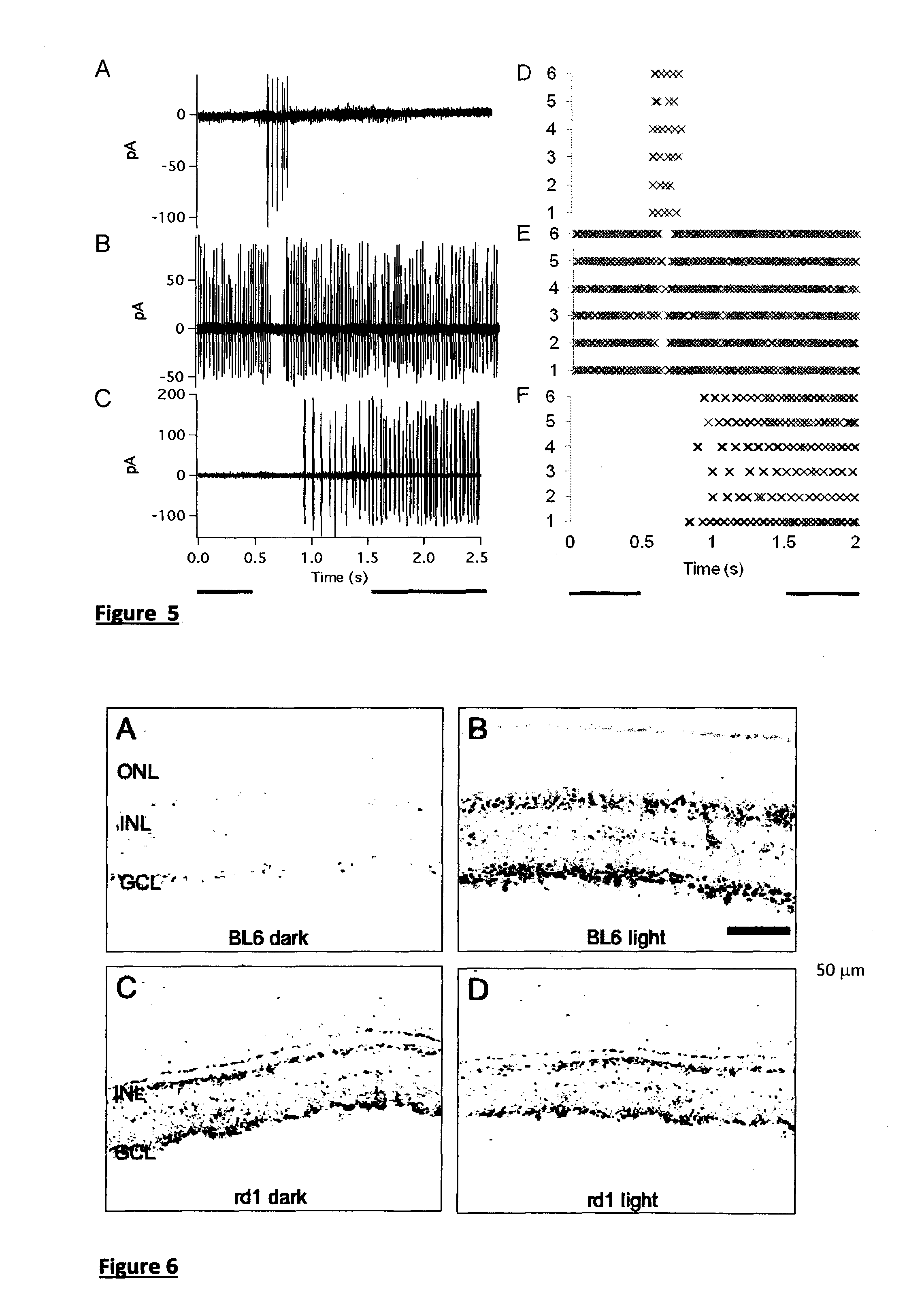Light-Sensitive Chimeric GPCR Protein
a chimeric gpcr, light-sensitive technology, applied in the direction of peptides/proteins, drug compositions, peptides, etc., can solve the problem that ionotropic receptors like channelrhodopsin are not capable of signal amplification, and achieve the effect of increasing signal difference, improving vision, and signal differen
- Summary
- Abstract
- Description
- Claims
- Application Information
AI Technical Summary
Benefits of technology
Problems solved by technology
Method used
Image
Examples
examples documenting
[0061 light activation to the signaling cascade of mGluR6 by an exemplary mGluR6 chimeric GPCR protein, in particular by an exemplary mGluR6-melanopsin chimeric protein:
[0062]In these first experiments, a functional analysis of mGluR6-Melanopsin Chimera in cultured human embryonic kidney cells (HEK293 cells) stably expressing a GIRK potassium channel is performed:
[0063]This experiment tests functional coupling of light-activation of chimera according to exemplary embodiment D (Seq. No. 7 / 8) to GIRK channels in HEK293 cells, a known ability of functionally activated mGluR6 and requires the expression of embodiments of the light-sensitive mGluR6-melanopsin in cultured human embryonic kidney cells (HEK293 cells) stably expressing a GIRK potassium channel (HEK293-GIRK cells).
[0064]In HEK293-GIRK cells mGluR6 couples intracellularly via a G-protein to the heteromeric Kir3.1 / 3.2 potassium channel (GIRK channel). Therefore, successful light-activation of the mGluR6-melanopsin chimera can b...
PUM
| Property | Measurement | Unit |
|---|---|---|
| voltage | aaaaa | aaaaa |
| permeability | aaaaa | aaaaa |
| light intensities | aaaaa | aaaaa |
Abstract
Description
Claims
Application Information
 Login to View More
Login to View More - R&D
- Intellectual Property
- Life Sciences
- Materials
- Tech Scout
- Unparalleled Data Quality
- Higher Quality Content
- 60% Fewer Hallucinations
Browse by: Latest US Patents, China's latest patents, Technical Efficacy Thesaurus, Application Domain, Technology Topic, Popular Technical Reports.
© 2025 PatSnap. All rights reserved.Legal|Privacy policy|Modern Slavery Act Transparency Statement|Sitemap|About US| Contact US: help@patsnap.com



